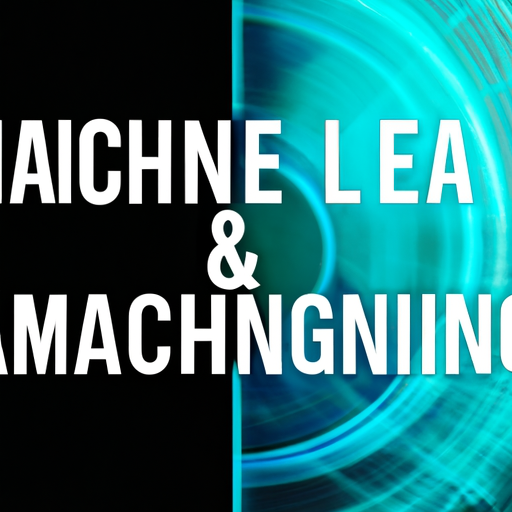Understanding The Difference Between AI And Machine Learning
Artificial intelligence (AI) and machine learning (ML) are buzzwords that frequently come up when discussing advanced technologies today.
Despite being related, they are not synonymous.
In this article, we’ll delve into what sets AI and ML apart, providing a clear understanding of each concept.
By the end, you’ll be able to explain the difference between AI and machine learning with ease.
Introduction To Artificial Intelligence
Let’s start by defining artificial intelligence.
AI refers to the capability of a machine to imitate intelligent human behavior.
It encompasses a wide range of technologies and applications, which aim to perform tasks that typically require human intelligence.
These tasks include problem-solving, language understanding, perception, and even decision-making.
From virtual assistants like Siri and Alexa to more complex systems like self-driving cars – AI is everywhere!
The field of artificial intelligence has grown remarkably, with significant contributions from domains such as science technology engineering and mathematics (STEM).
AI programming with Python is particularly popular due to Python’s simplicity and extensive libraries that support AI development.
The Breadth Of Artificial Intelligence
AI can be categorized into two primary types: Narrow AI and General AI.
Narrow AI is designed for specific tasks such as speech recognition or image classification.
General AI aims to understand, learn, and function like a human in virtually any task; however, it remains largely theoretical at this stage.
Diving Into Machine Learning
Now let’s shift our focus to machine learning.
Machine learning is actually a subset of artificial intelligence.
While AI focuses on enabling machines to carry out tasks smartly, ML zeroes in on enabling machines to learn from data.
Machine learning involves training algorithms on large datasets so they can make predictions or decisions without being explicitly programmed for every scenario.
For example, consider Netflix’s recommendation engine. It constantly learns from your viewing habits to suggest shows you might like based on previous watching patterns.
Types Of Machine Learning Algorithms
There are several types of machine-learning algorithms:
– Supervised Learning: The algorithm learns from labeled data.
– Unsupervised Learning: The algorithm identifies patterns within unlabeled data.
– Reinforcement Learning: The algorithm learns through rewards or penalties from actions performed in an environment.
With platforms offering cloud computing courses now incorporating ML modules extensively, gaining knowledge in this field has never been more accessible.
Key Differences Between AI And Machine Learning
To truly grasp the difference between artificial intelligence and machine learning, it helps to understand their distinct goals:
1. Scope:
– AI aims for broader implementation across various forms of intelligent behavior.
– ML narrows down on improving specific performance metrics via data-driven methods.
2. Functionality:
– In AI, systems are built with embedded knowledge about their domain.
– In ML, systems generate knowledge dynamically using data inputs over time.
3. Applications:
– Examples of general applications powered by pure AI include natural language processing tools.
– Examples leveraging ML specifically include fraud detection systems where models evolve continuously based on new transaction patterns.
Real-Life Applications Highlighting Differences
Consider autonomous vehicles; they provide an excellent case study separating these concepts:
– Autonomous vehicles use multiple layers involving computer vision (a branch tied closely with ML).
– They combine this with decision-making frameworks typical within general-purpose Artificial Intelligence models.
Similarly considering job roles:
A full stack developer might integrate both aspects when developing sophisticated web services where backend logic uses ML models while frontend interfaces leverage various narrow-AI elements enhancing user interactions intuitively.
The Interdependence Of AI And Machine Learning
While distinguishing them is crucial; it’s equally vital recognizing how intricately linked they remain:
Without effective ML techniques refining datasets continually – most practical implementations would see limited success rates across complex real-world use cases.
Thinking practically,
Incorporating aspects such as introductions introducing these technologies gradually before escalating towards more advanced discussions helps generate deeper insights often missed otherwise among lay audiences unfamiliar initially yet eager exploring modern tech landscapes further ahead eventually!
Given current trends emphasizing automation increasingly spanning varied sectors globally – understanding differences holistically becomes paramount navigating future opportunities efficiently successfully!
So whether you’re embarking upon new ventures studying artificial intelligence a modern approach widely taught through online resources today or diving deeper into specialized areas directly impacting daily operations surrounding us constantly – appreciating nuances presented forthwith represents essential step towards mastering intricacies involved thoroughly indeed!
In conclusion,
Understanding the difference between artificial intelligence & machine learning demystifies terms frequently interchanged incorrectly clarifying unique roles functions each play evolving ecosystem transforming industries universally perpetually shaping tomorrow innovatively!

